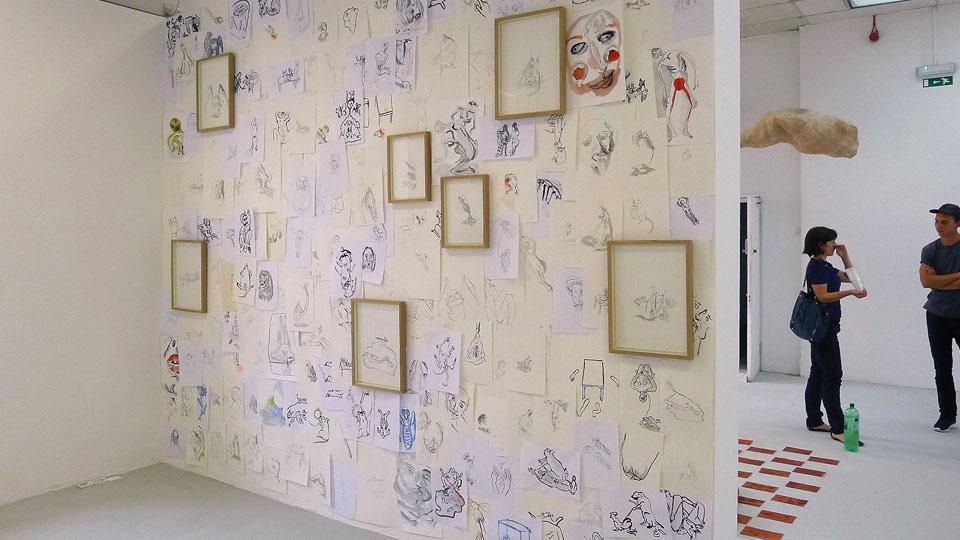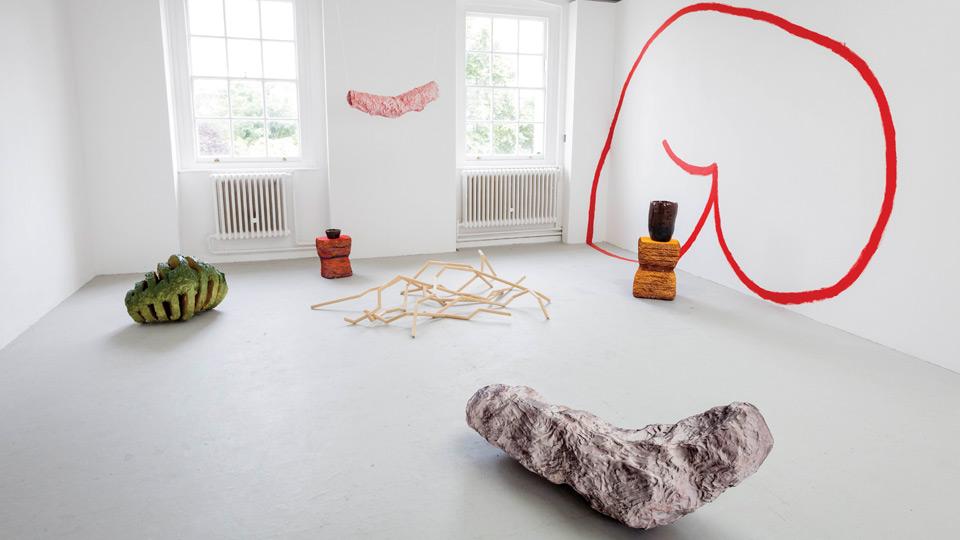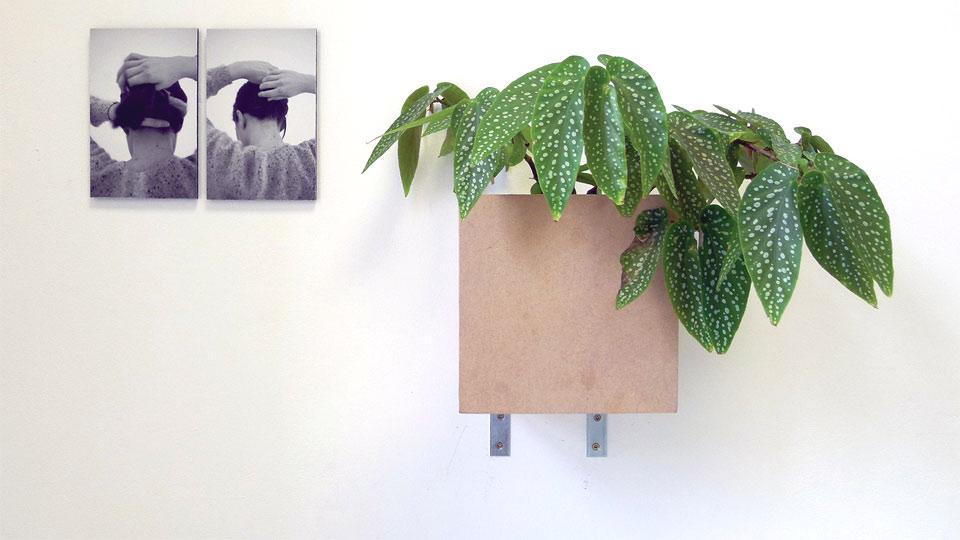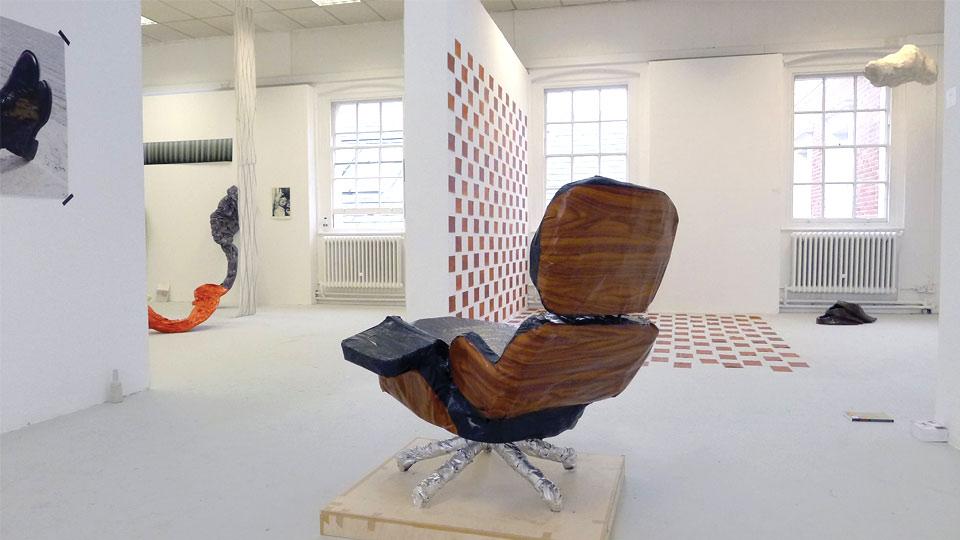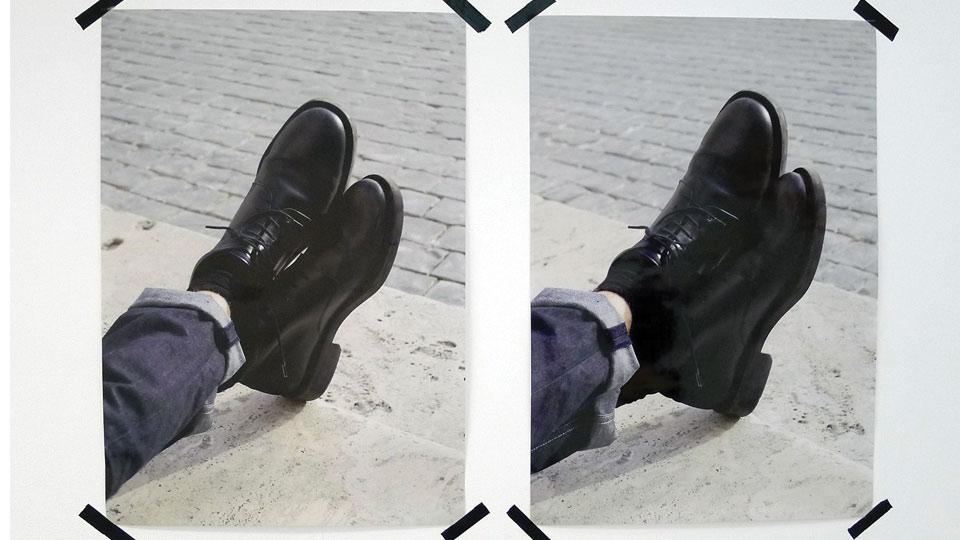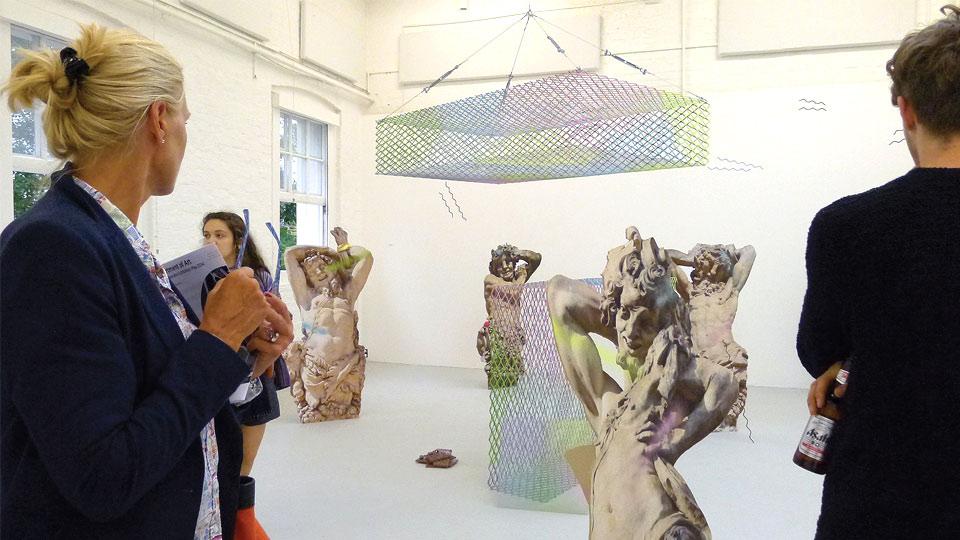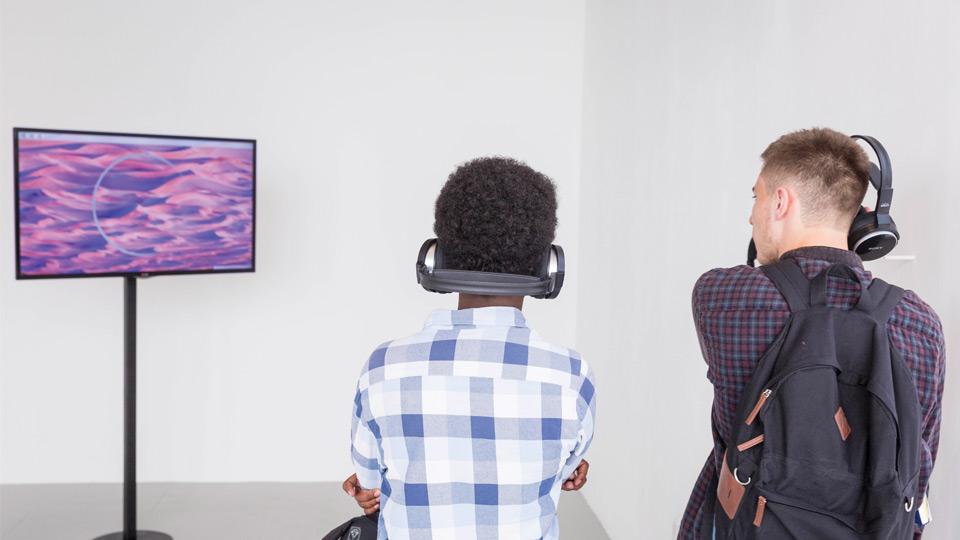Note about optional modules (if available): The below is indicative of the typical modules offered, but is not intended to be construed or relied on as a definitive list of what might be available in any given year. The module content and availability is subject to change.
Overview
This programme allows you to integrate both fine art practice and the study of history of art in the context of contemporary visual culture. Throughout the programme, you'll be required to participate actively in seminars, discussing your own work and that of other students.
The programme is made up of:
- Fine art studio practice, taught in the Department of Art, develops your work through experimentation, with the aim of achieving a thorough understanding of your chosen media and their relevance within contemporary culture. Three years of intensive studio and workshop practice culminate in the final year exhibition which is assessed and then opened to the public.
- History of art modules taught through lectures, seminars and tutorials in the Department of Visual Cultures.
- An interdisciplinary Link Seminar taught across both departments, which explores the dynamic relationships between art history, theory and practice in large seminar and small workshop formats.
Year 1 (credit level 4)
Studio Practice focuses on the acquisition of fundamental knowledge and gives you the basic practical skills necessary to initiate your research. You will gain experience of making art independently and an awareness of the interaction between the history of art and theory as it relates to your studio practice.
Your tutors assess your Studio Practice coursework continuously and your work is also assessed through an end-of-year presentation.
In Art History, you will develop an independent critical involvement with works of art and visual culture. Our first-year modules enable you to examine changing conceptions of art and the artist, historically and also in terms of context, ideas, and kinds of practice.
Each of our first-year modules is taught by a team of four or five different teachers from the permanent faculty. In this way, first-year students soon get to know many of the Department’s core academic staff. You will therefore begin your second year with both rich insights from and a comprehensive overview of Department life as a whole.
All students take a compulsory Art History module:
| Module title |
Credits |
|
Modernities
|
30 credits |
Plus one of the following modules:
| Module title |
Credits |
|
Space and Time
|
30 credits |
|
Beyond Boundaries
|
30 credits |
Your first year will introduce you to history of art as a discipline and engage you in discussion of key aspects of contemporary visual culture – including not just artefacts in museums and art galleries, but also architecture, cityscape and landscape, adverts, TV and film, websites, the body, and street style.
You must pass all components to progress to the following year.
Year 2 (credit level 5)
Studio Practice in Year 2 begins to deal with more complex issues and a selective application of acquired knowledge and practical skills. It is a period of experimentation and synthesis, expanding and deepening your practice.
Your tutors assess your Studio Practice coursework continuously and you make a presentation of selected work for a viva voce in the third term, where you will be asked to discuss your work in depth.
History of Art in Year 2 will involve you taking two option modules. These currently include:
- Beckett & Aesthetics
- Cohabitations/Inhbitations
- Art and Technologies of the Image
- The Fact of Blackness
- Fashion as a Dialectical image
- Ornamentation & Materiality
- Museums, Galleries, Exhibitions
- Popular Modernism
- Patterns of Perception
- Postmodernities
- Radical Imagination & Speculative Voyages
You will also take the following compulsory module.
| Module title |
Credits |
|
The Link
|
15 |
Year 3 (credit level 6)
Studio Practice at this level reflects an independent, self-motivated practice and your potential to work as an artist. You will demonstrate a high degree of understanding, critical awareness and independent judgement. At this level, you will have consolidated your practical and critical skills in preparation for the Final Exhibition and further independent practice.
Your tutors assess your Studio Practice coursework continuously and at the end of the year you mount an exhibition of your Studio Practice for assessment, which is then open to the public.
In History of Art you take 45 credits from a list of Special Subjects and option modules, or 15 credits from the list of Special Subjects and option modules, plus a dissertation of 8,000–10,000 words (30 credits).
You will also take the following compulsory module.
| Module title |
Credits |
|
The Link
|
15 |
Special Subjects and option modules include:
| Module title |
Credits |
|
Animating Architecture
|
15 credits |
|
Archive and Spectacle
|
15 credits |
|
Film Fables
|
15 credits |
|
Documentary Lives
|
15 credits |
|
Landscape and Power
|
30 credits |
|
Philosophy and...
|
30 credits |
|
Sexual Poetics
|
15 credits |
|
The Truth in Painting
|
30 credits |
|
Research Architecture
|
15 credits |
|
Counter Forensics
|
15 credits |
Invited artists, curators, gallerists, administrators and funders will provide you with specialist advice and further information to complement your studies and prepare you for professional life after graduation.
Teaching style
This programme is taught through intensive studio and research art practice, tutorials and mixed-year studio practice presentations. You'll also attend weekly art history lectures and seminars.
You'll be allocated a studio space that will be the focal point of your activities. Students from all three levels share the studio spaces, providing valuable peer support. You will determine the nature of your practice and, with guidance from the tutorial staff, be encouraged to work in any medium that you choose.
The following information gives an indication of the typical proportions of learning and teaching for each year of this programme*:
- Year 1 - 16% scheduled learning, 84% independent learning
- Year 2 - 16% scheduled learning, 84% independent learning
- Year 3 - 4% scheduled learning, 81% independent learning, 5% placement
How you’ll be assessed
You’ll be assessed by a variety of methods, depending on your module choices. These include coursework, examinations, group work and projects.
The following information gives an indication of how you can typically expect to be assessed on each year of this programme*:
- Year 1 - 50% coursework, 50% practical
- Year 2 - 90% coursework, 10% practical
- Year 3 - 75% coursework, 25% practical
*Please note that these averages are based on enrolments for 2022/23. Each student’s time in teaching, learning and assessment activities will differ based on individual module choices.
Download the programme specification.
Please note that due to staff research commitments not all of these modules may be available every year.

